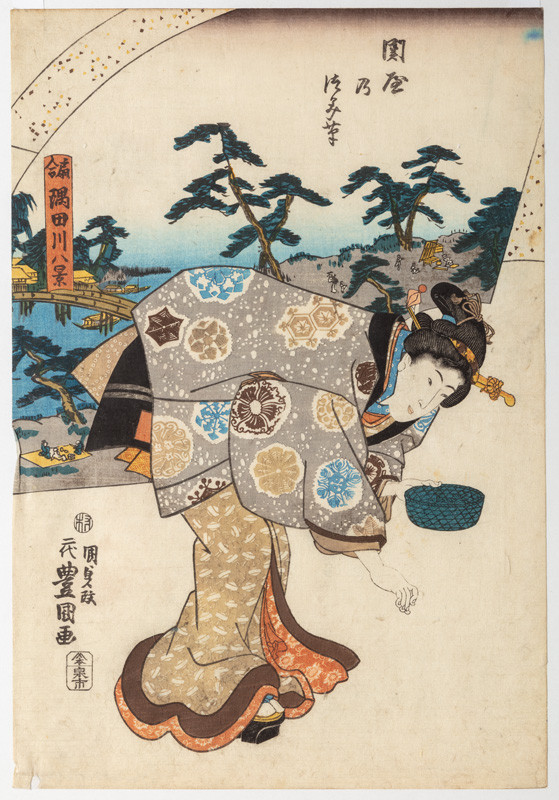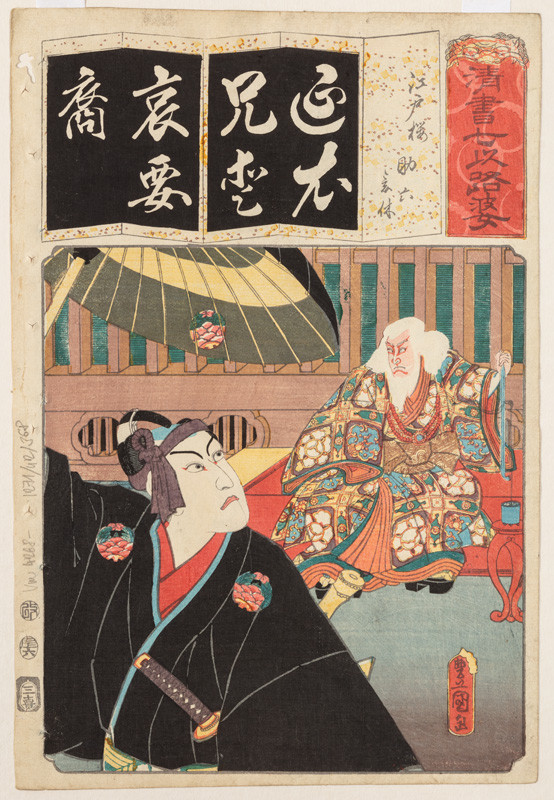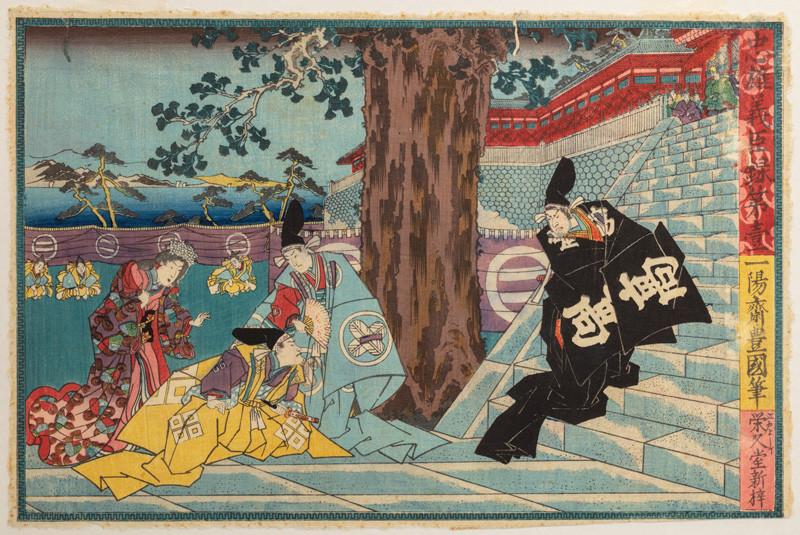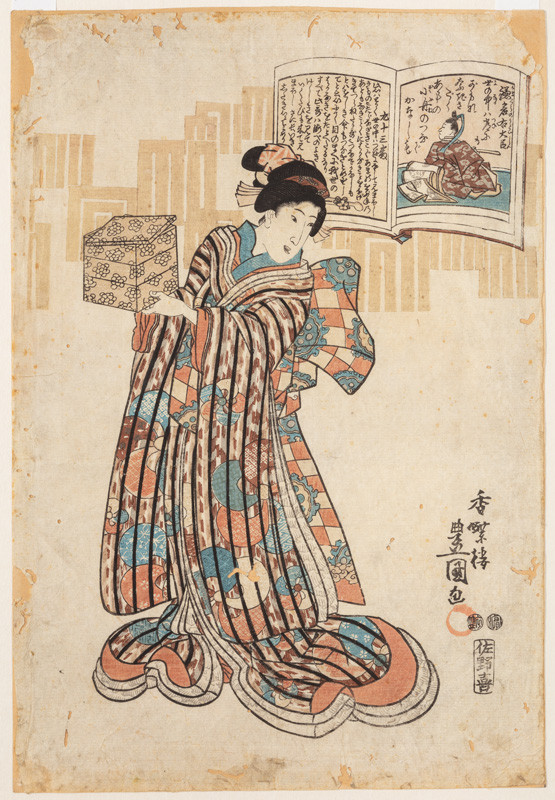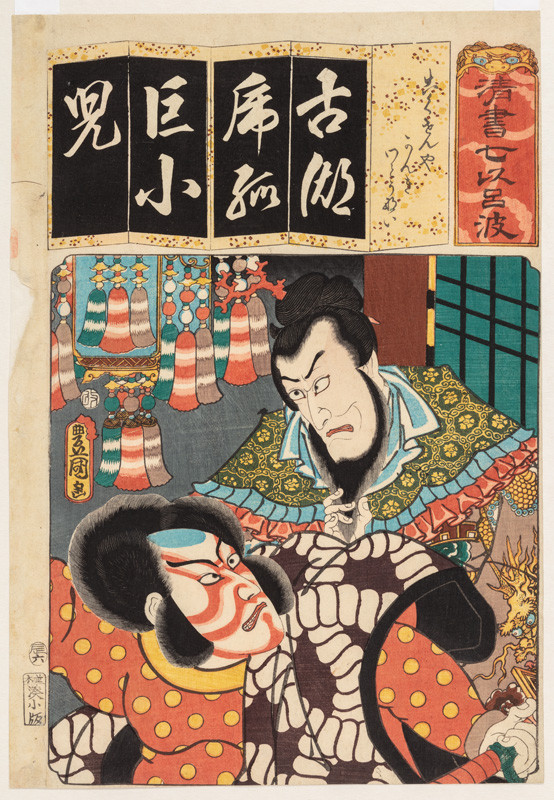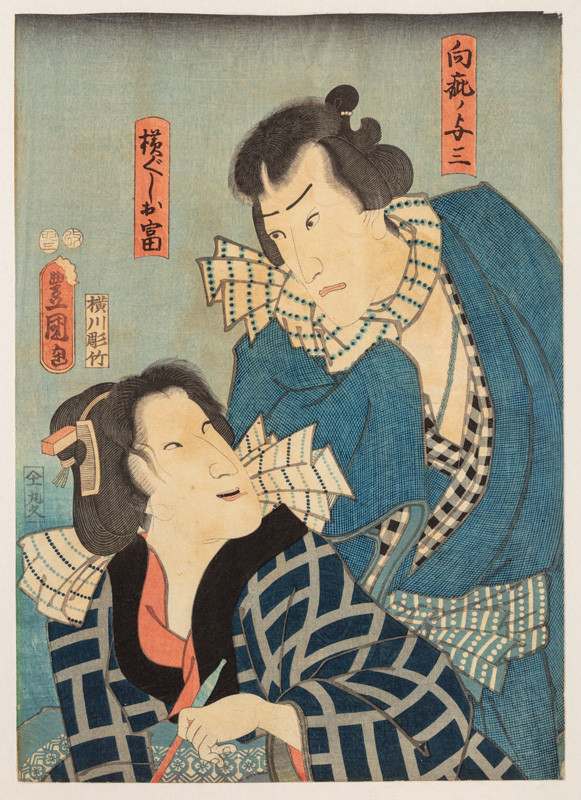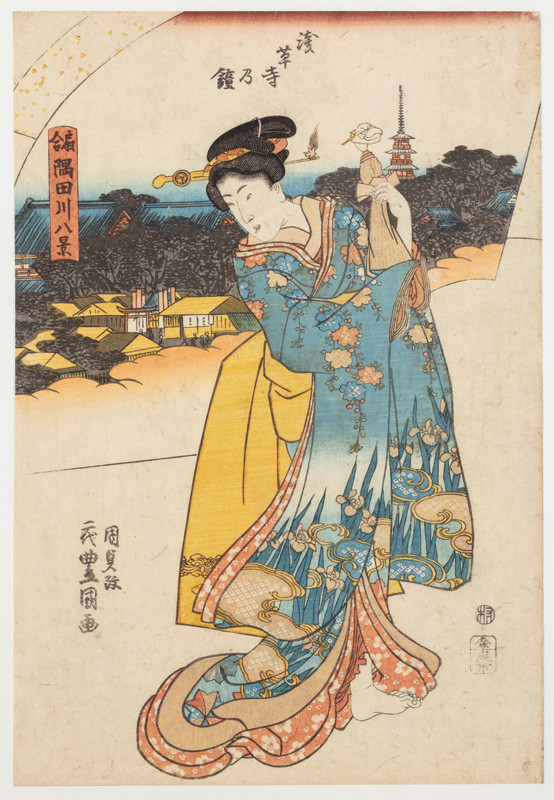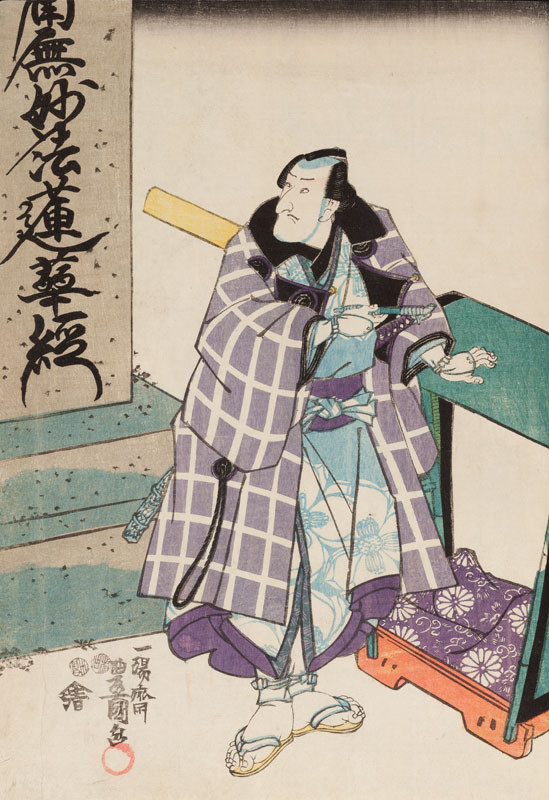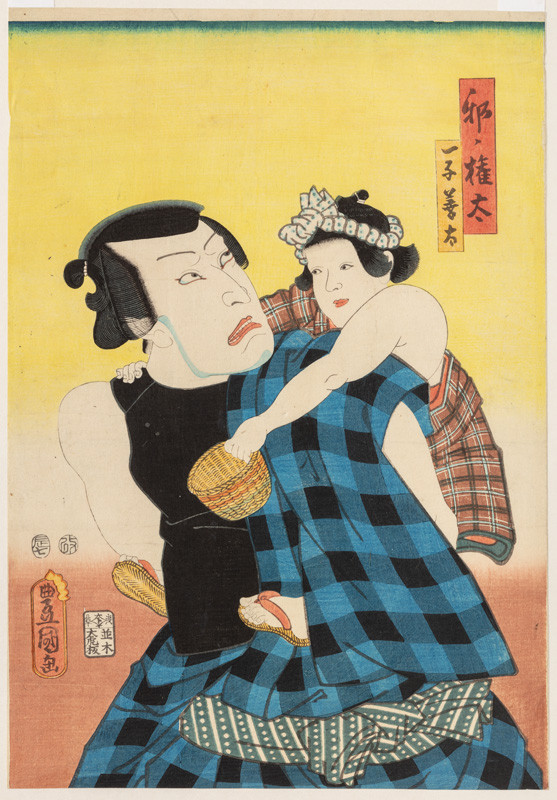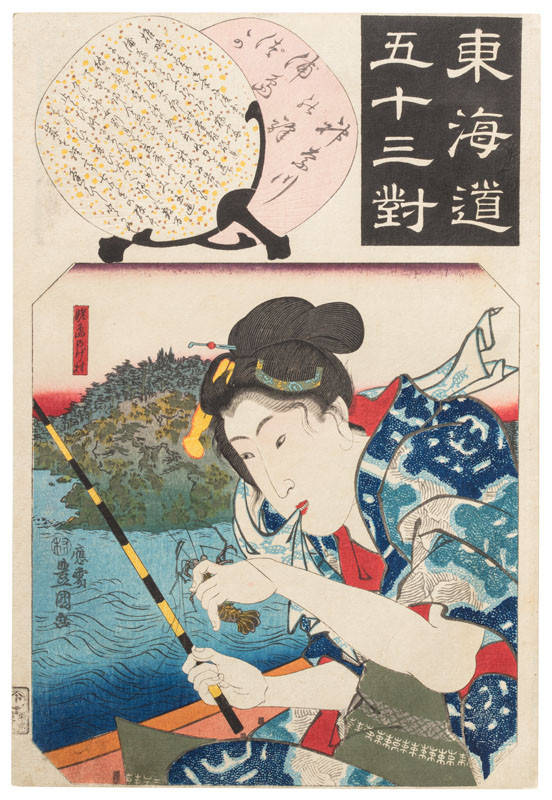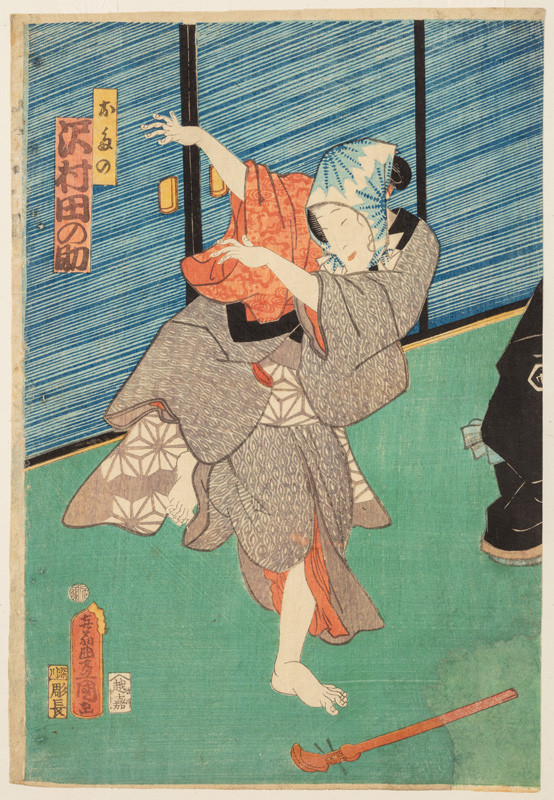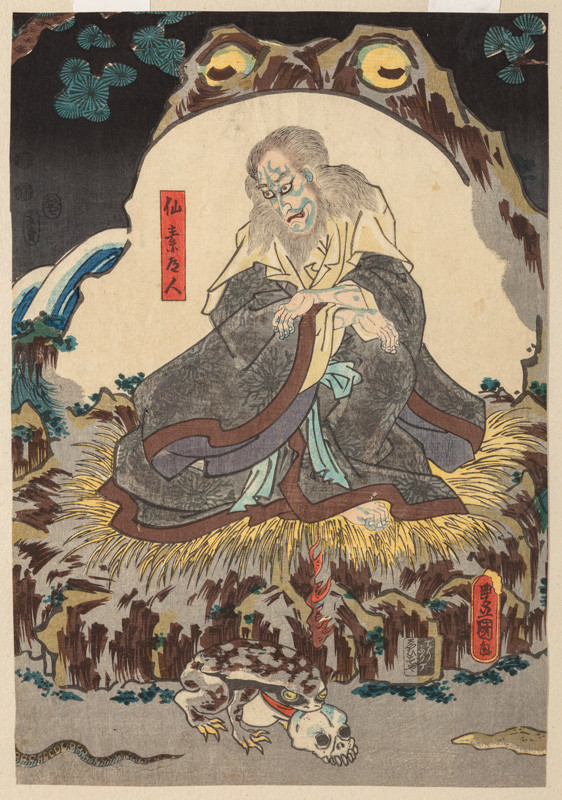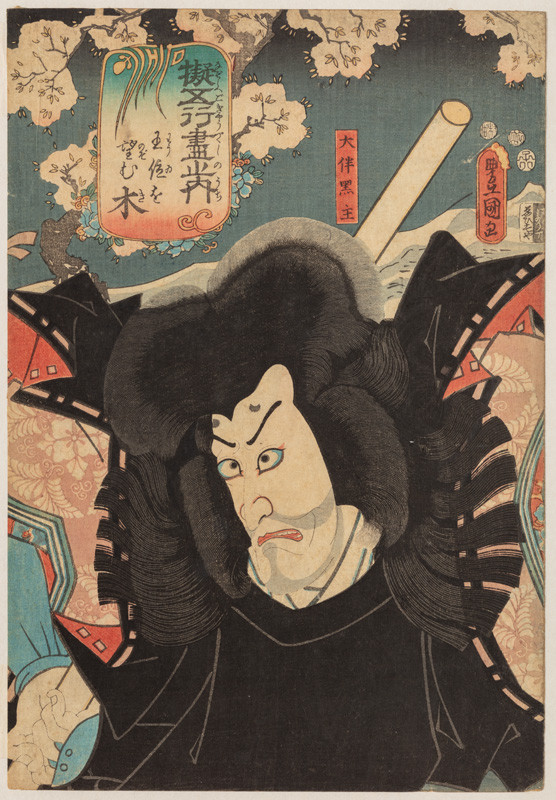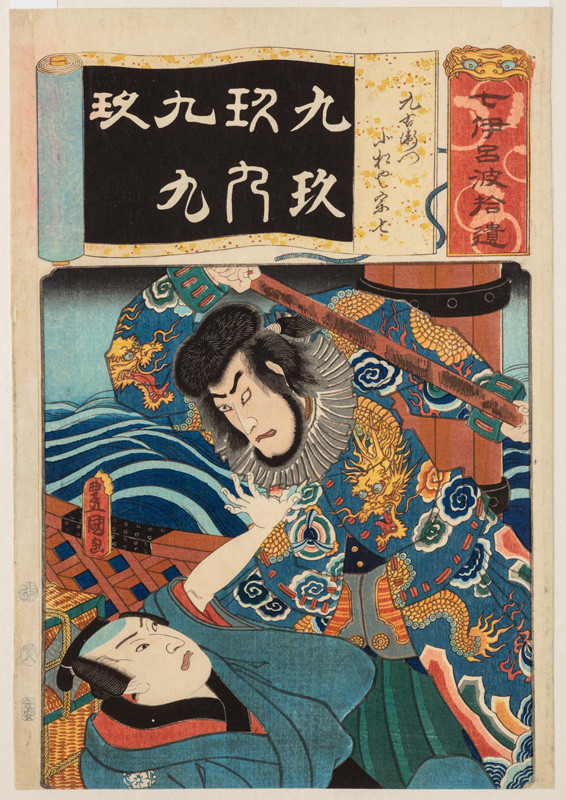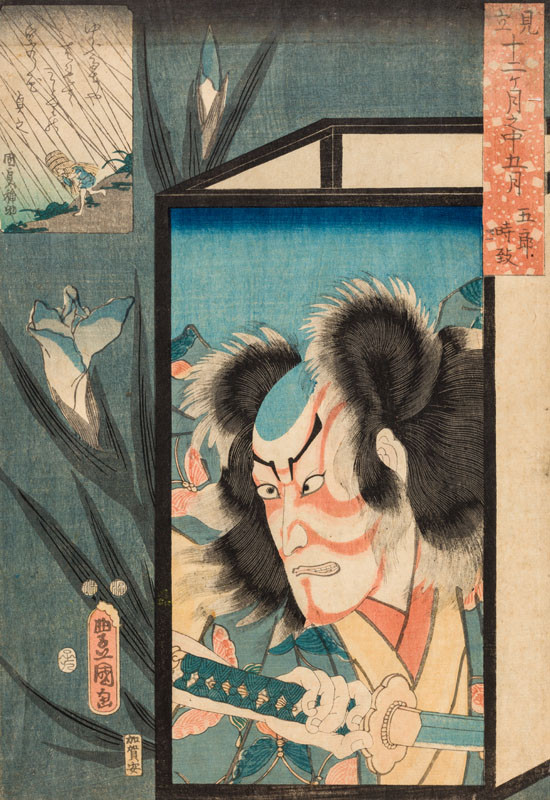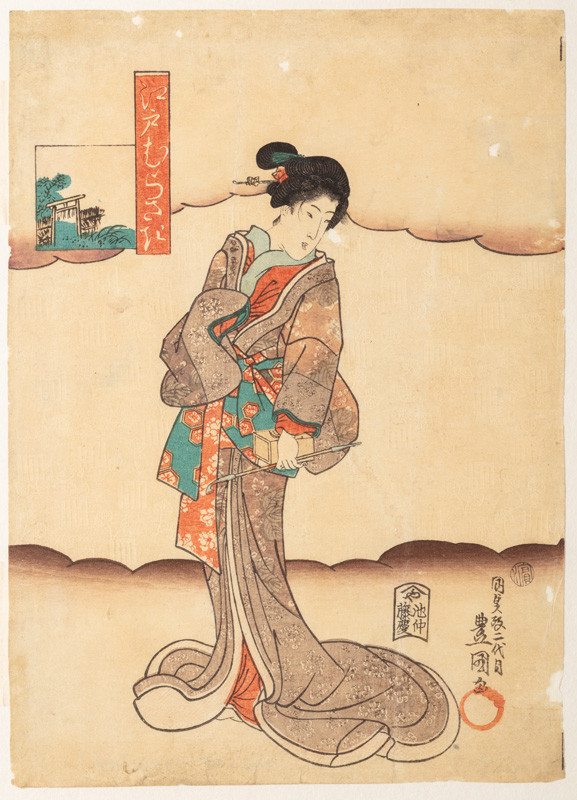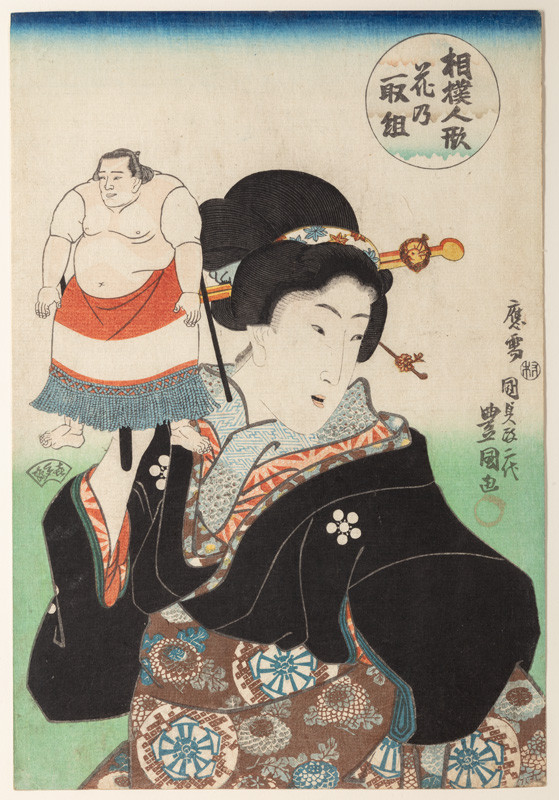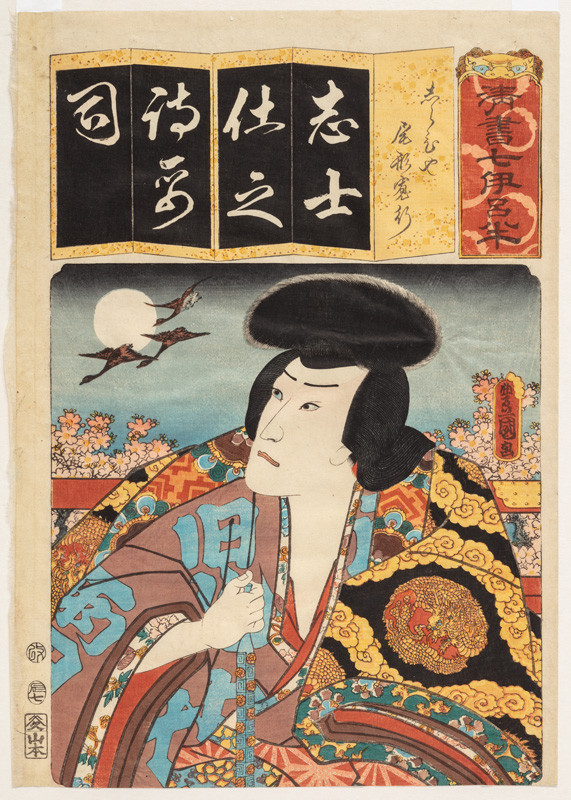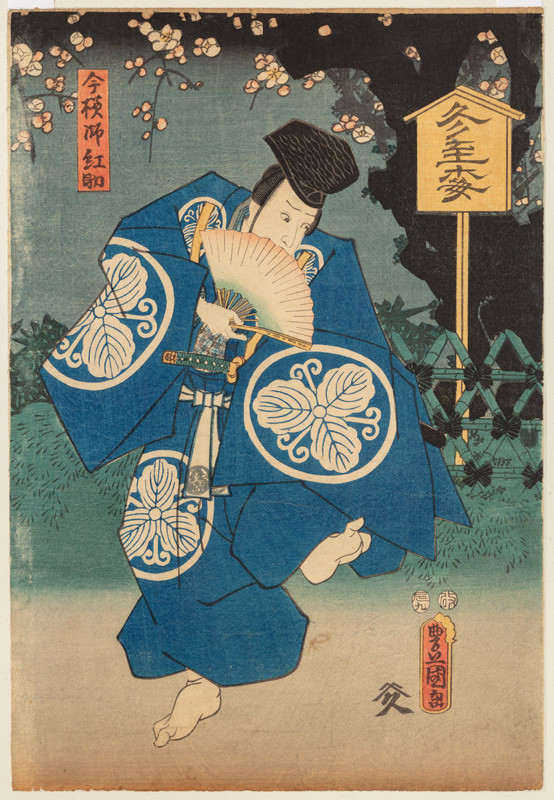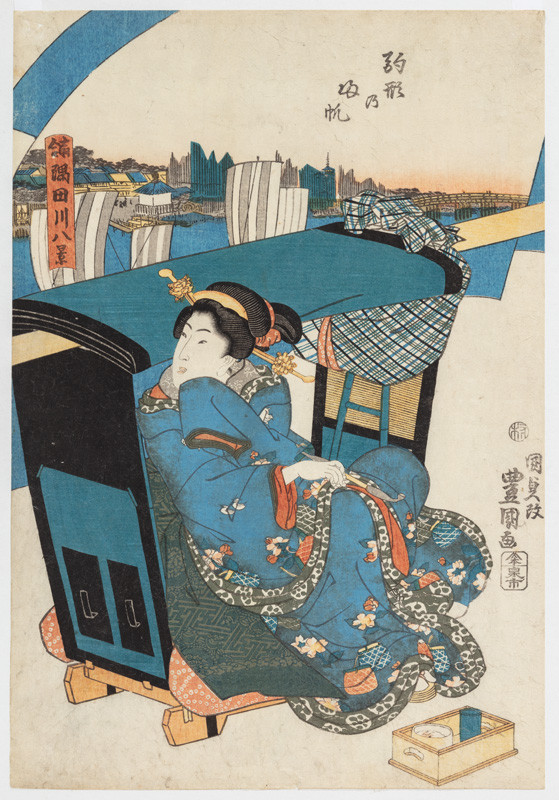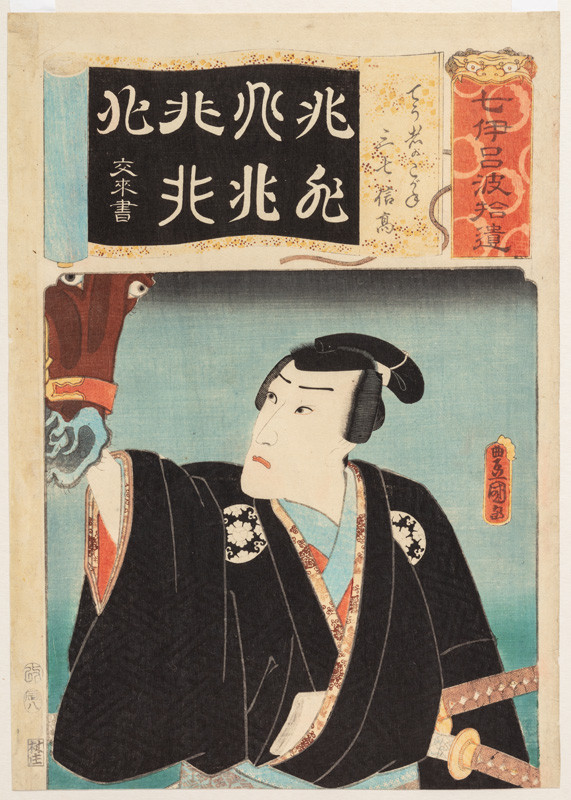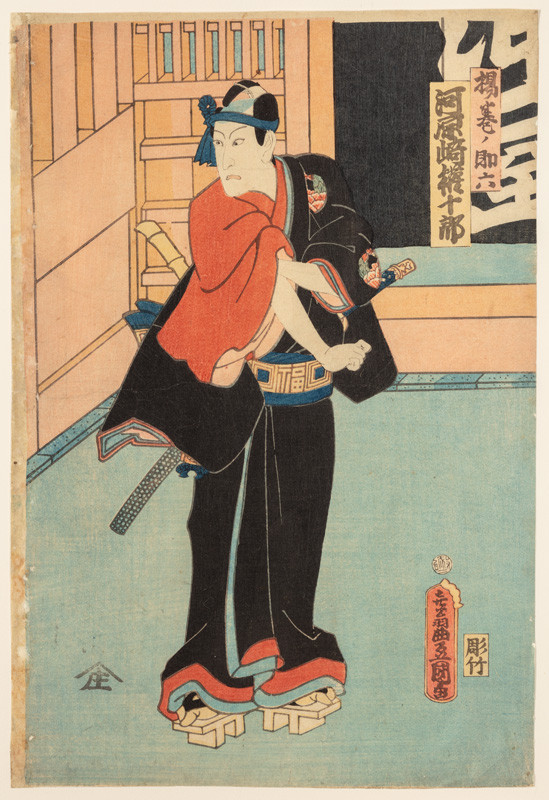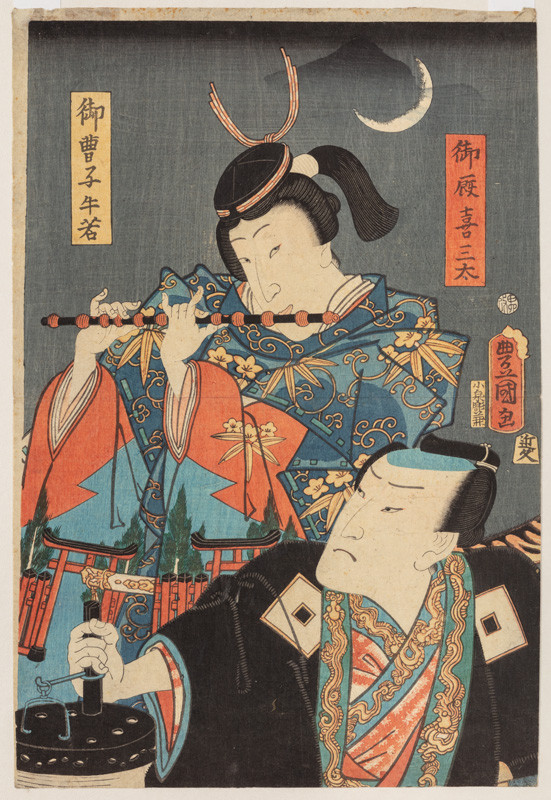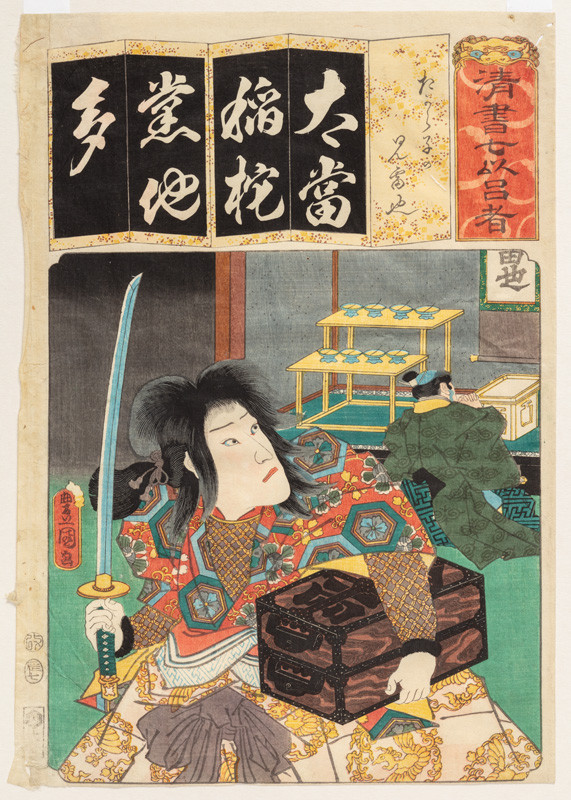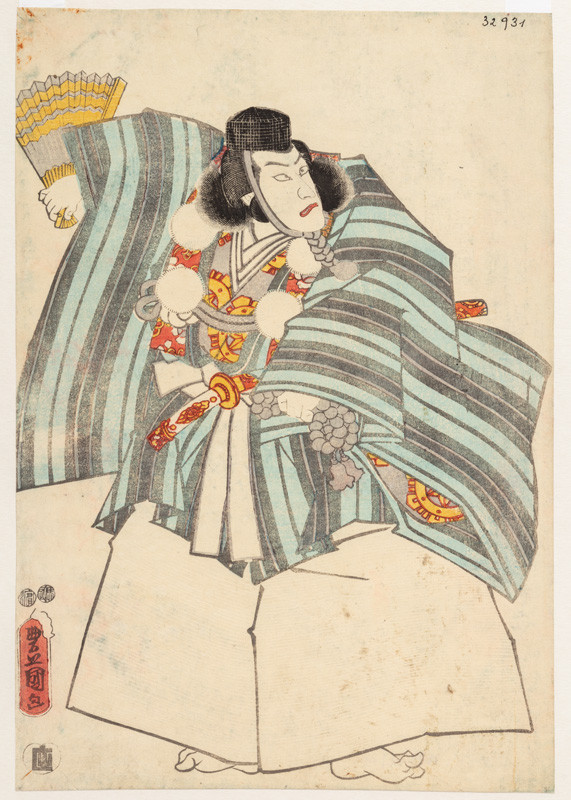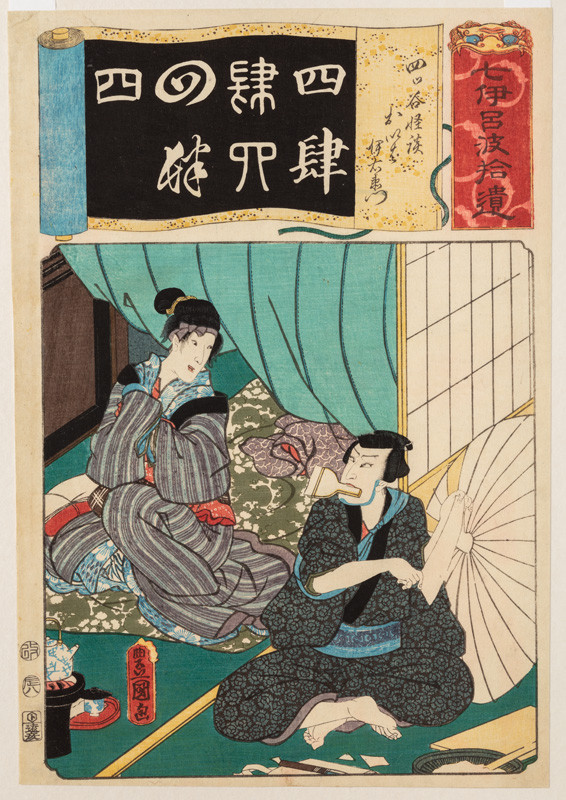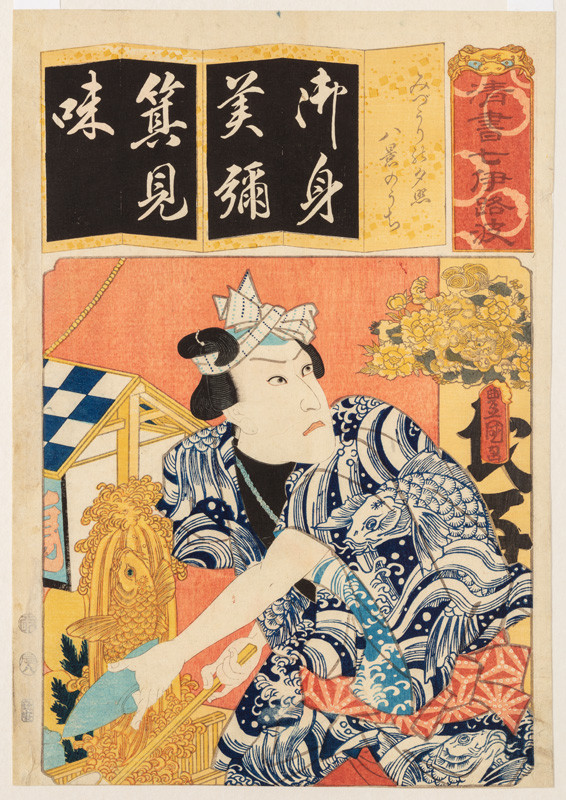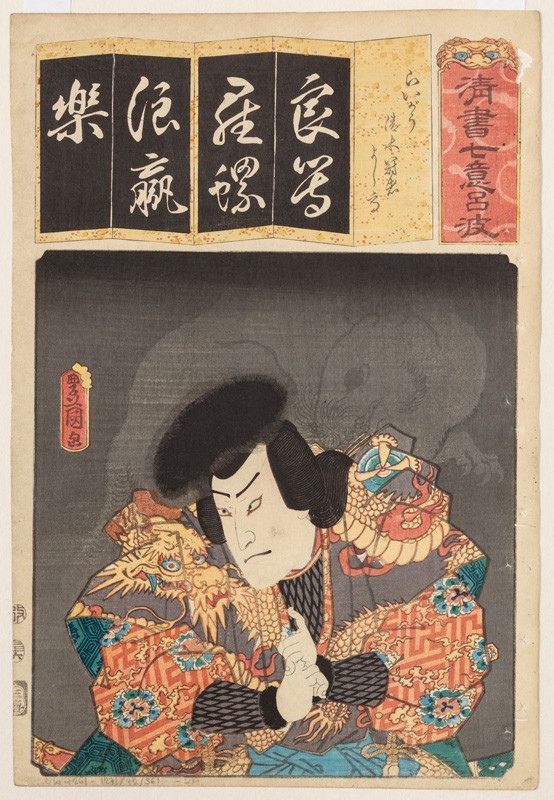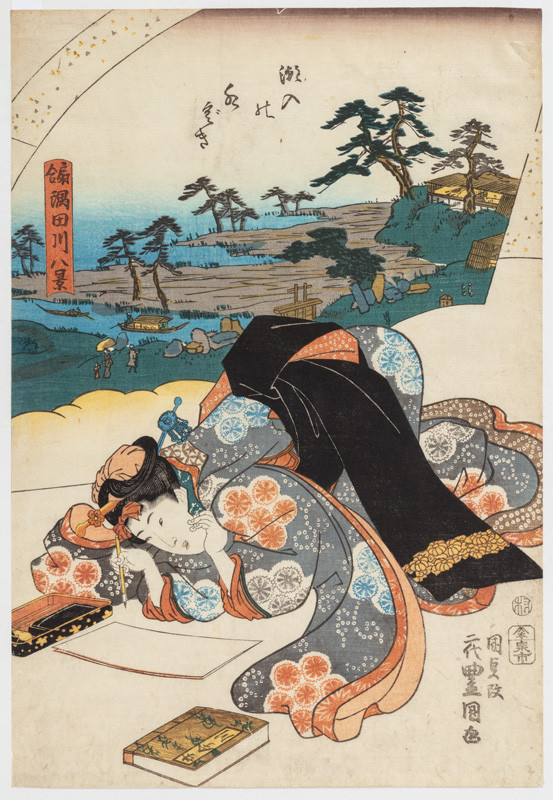
With the series of syllables from the Japanese syllabary iroha in seven calligraphic variants, Kunisada returned to the popular series of stations on the Tōkaidō Road and scenes with one hundred poets. The series Seven Variations of Syllabary Characters (Seisho nanatsu iroha) has a similar typographic design with a decorative heading and a loosely-following illustration composed in a square with a direct link to kabuki theatre. The National Gallery Prague houses 32 sheets from the original series of 47 syllables (some in duplicate) selected from two albums. After the great success of this cycle, Kunisada published a continuation of this series of theatre scenes, which were sorted by syllabary characters or by the characters of the iroha poem (Nanatsu iroha shūi). This print depicts a scene from the drama Masakado and portraits of the actors Nakamura Fukusuke as Ōya no Tarō Mitsukuni, and Iwai Kumesaburō III as Princess Takiyasha. Princess Takiyasha is the daughter of the former pretender to the throne Masakado, who lives in the wrecked palace Sōma in the mountains, a witness of her family’s past glory. In the palace, the princess guards Masakado’s battle banner with the help of the magic and supernatural powers of a giant frog. Warrior Ōya no Tarō Mitsukuni sets out to explore the enchanted place. At first, Takiyasha tries to seduce him, and when she fails, they clash and the residence is destroyed. (See Helena Honcoopová, Kunisada, Praha 2005, p. 216)

